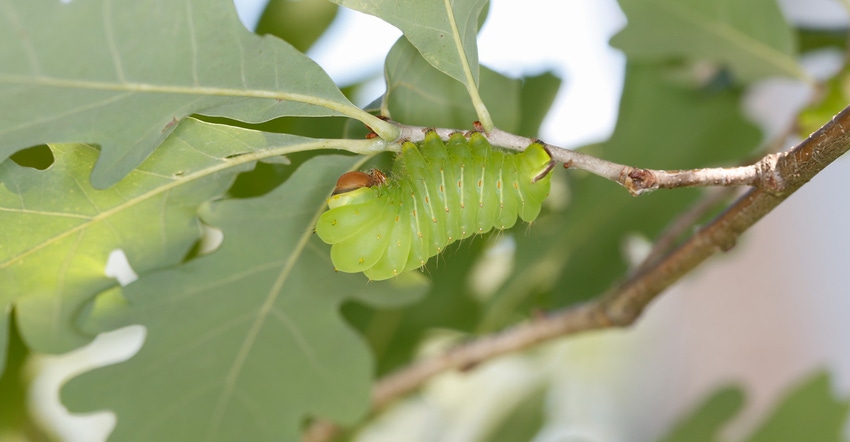May 22, 2020

What good are native plants? I value plants for how they look, smell and feel. Qualities such as color, texture, itchiness and shape influence my opinion.
But I also value plants for how they work. They create the air we breathe, move stormwater into the ground, prevent erosion along creeks, and perhaps most importantly, they convert sunlight into food. That’s how Doug Tallamy puts it.
Tallamy, author of The New York Times best-selling book "Nature’s Best Hope," discusses how different plants feed animals. In particular, he compares a native white oak tree in his yard with a non-native Bradford pear in his neighbor’s yard. He found 410 caterpillars on the oak, and one caterpillar on the Bradford pear.
Repeating the survey on different trees, he came up with the same results and the question, what is so different about the oak and the pear?
Native tastes better
Tallamy, an entomologist at the University of Delaware, understood the answer: It’s that the ancient lineage of white oak that ended up in his yard “familiarized” itself with certain insect caterpillars over millions of years that are now immune to its toxic chemicals.
The Bradford pear, on the other hand, was introduced from China 100 years ago, which is not nearly enough time for caterpillars of local species to acquire a taste for Bradford pear leaves.
Now, if you are “old-school” like me, your eyebrows may rise a little at the thought of insects eating plants. It was drilled into me through college courses, such as Plant Pathology 101, that if plants have holes, there is a treatment that won’t end well for the insect. This is bad news for hungry caterpillars, but it’s even worse for nesting birds, which feed their young as many as 8,000 caterpillars per nest, Tallamy says.
More than 400 species of birds are threatened in the U.S. today. You might ask, what can homeowners do for birds, and where do so many caterpillars exist? They’re on Tallamy’s white oaks, of course, and other oak species.
They also are on wild cherry, hickory, hackberry, black gum, willow, pawpaw, persimmon and so many more. But how many native trees is enough? Five; 10; or 10,000?
Plant for the birds
The answer, Tallamy says, is 70% native species for successful bird nesting. Anything less leads to a decline in bird populations. This is good news, because now we know where the threshold lies.
We can inventory our landscapes and set goals based on scientific evidence. But we don’t have to remove all non-native plants. Thirty percent can be ginkgo and saucer magnolias or other favorite non-native plants that we have come to love.
But be careful: Our love-affair with far-flung plants sometimes comes with a price. Bradford pear, burning bush, Japanese beautyberry, golden raintree, heavenly bamboo, empress tree and so many others are becoming highly invasive and cause serious environmental damage to the remaining few wild areas.
Tallamy says in his book that 86% of land in the U.S. is privately owned (93% in Missouri). That includes our yards, common areas, churches, zoos, gardens, universities, businesses and potentially some schools and parks. He says that our neighborhoods offer viable opportunities for meeting the 70% threshold for bird survival.
Will you join me in doing our part to meet this important goal in the coming years and decades? The living world around you is depending on it.
If you would like to learn more about gardening with native plants, attend a Council Ring Conversation in the Whitmire Wildflower Garden at Shaw Nature Reserve in Gray Summit, Mo.
Upcoming conversations include:
June 11. Rainscaping Practices
July 9. Seeded Prairie and Savanna
Sept. 3. Incorporating Native Landscape Concepts into Existing Non-native Gardens
Oct. 8. Designed Plant Communities
Nov. 12. Gardening with Environmental Benefits
You also can find a wealth of information about native plants for gardening and other uses at grownative.org.
Woodbury is a horticulturalist and curator of the Whitmore Wildflower Garden at Shaw Nature Reserve in Gray Summit, Mo., and an adviser to Grow Native! program.
About the Author(s)
You May Also Like




